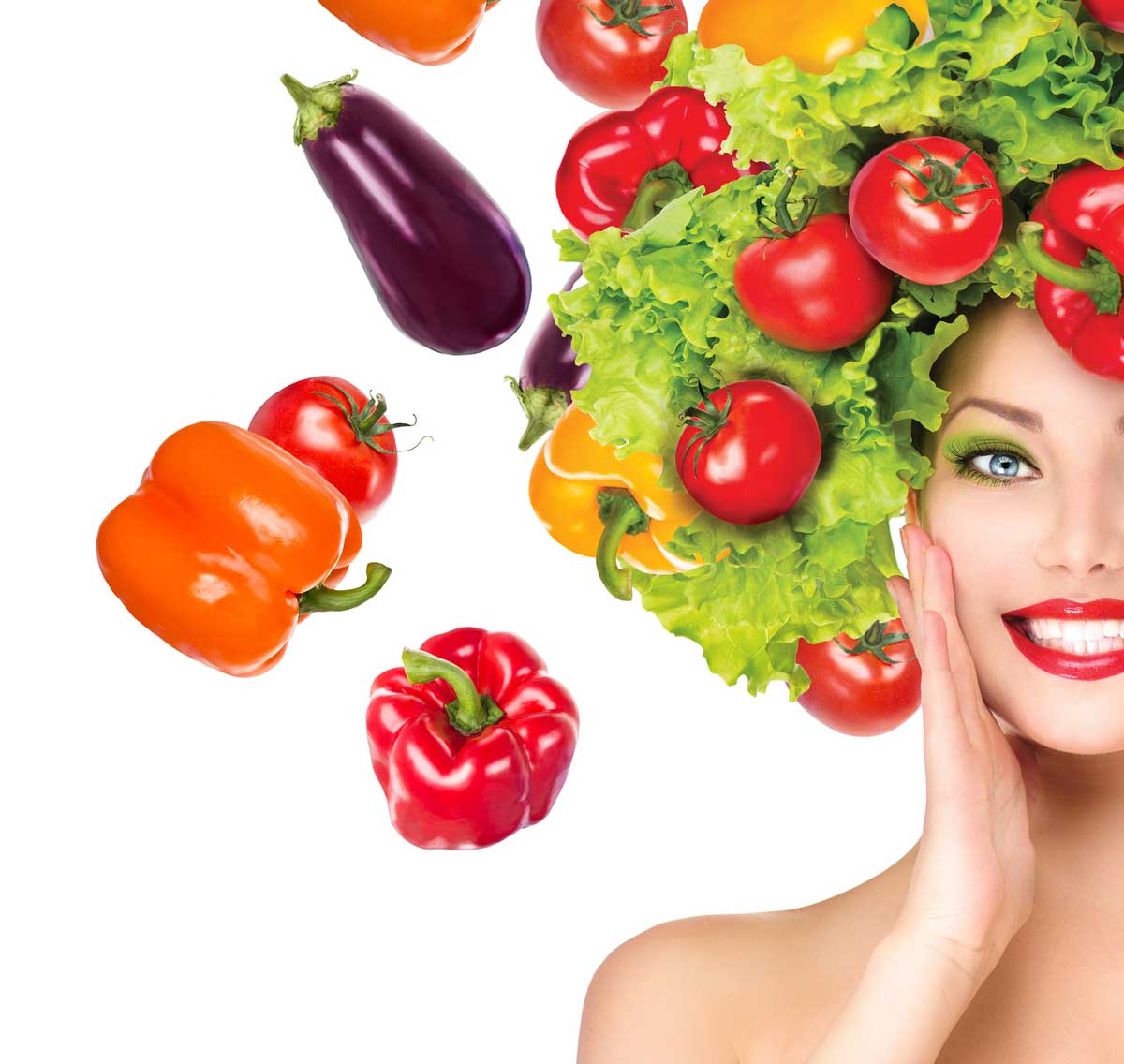Naturally glowing, healthy and youthful looking skin often starts with your diet – even if you are using the most expensive anti-wrinkle or collagen boosting creams! We’ve asked the experts for top tips on eating your way to beautiful skin:
Firstly, how can food impact our skin?
“Our skin gets everything it needs to stay healthy from the food we eat. This includes protein and vitamin C to build collagen, which gives strength and elasticity to the skin, vitamin A and zinc that help to combat acne, and those super-important healthy fats that help retain moisture in the skin to stop it becoming dry.
“Things in the food we eat can also have a negative impact on our skin health. Additives such as flavourings, colourings and sweeteners often found in processed foods can add to the body’s ‘toxic load’ and contribute to dull, lifeless skin. Too much sugar in our diet can be our skin’s worst enemy. It can upset hormone balance, triggering breakouts, and in the long term it can speed up skin ageing too,” explains Nutritionist & Fitness Instructor, Cassandra Barns.
‘Sashimi’ your way to glowing skin
“One of my favourite choices for your skin is itsu’s Mixed Sashimi (£9.99, www.itsu.com). It’s loaded with omega-3 from the salmon, which, as well as helping retain moisture in our skin, helps control inflammation – a factor in skin problems such as rashes and acne. The fish and edamame beans make this meal especially high in protein, which provides the building blocks for collagen and keratin to keep the skin strong, supple and waterproof. Wakame is rich in vitamins and minerals including manganese, a key antioxidant mineral to help protect the skin and ward off ageing. And because the whole meal is low in carbs, it won’t spike your blood sugar – so you’re avoiding any ageing and hormone-disrupting effects of blood sugar dips and peaks,” explains Cassandra.
Axe sugar to aid acne
Sugar does not only affect general health but it can also ruin our skin. How? “Firstly, sugary and processed foods contain little in the way of vitamins and minerals that nourish and protect the skin. Secondly, sugar and refined carbohydrates (which are quickly absorbed, just like sugar) cause a surge of the hormone insulin, which can then increase your levels of testosterone, which in turn can contribute to breakouts and acne,” explains Dr. Marilyn Glenville, author of Natural Alternatives to Sugar.
Choose the ‘cabbage-family’
“Cruciferous vegetables are the ‘cabbage-family’ vegetables including broccoli, cauliflower, kale, red and green cabbage, chard, watercress and brussels sprouts. They contain lots of sulphur compounds, which can support detoxification in the liver (adequate liver detoxification is just as important as healthy bowel for getting rid of toxins). They may also be supportive for hormone balancing, especially in women, because they contain a substance called indole-3-carbinol that has been found to balance oestrogen levels. Therefore, if you are a woman who is prone to skin breakouts around your period, you may find it helpful to eat one to two portions a day of these vegetables – but make sure you vary your choice so you don’t get bored,” explains Marilyn.
Perk up your skin with pumpkin seeds
“These nutritional gems are excellent sources of zinc, one of the most important minerals for maintaining healthy, happy skin. It is thought that as much as 20% of the body’s zinc is stored in the skin, and it has a major role in growth and healing. Deficiency in this mineral is linked with acne; dry skin, dermatitis and poor wound healing,” explains Marilyn.
Forgo oily skin by cutting down on fatty foods
“Try to avoid oily, greasy foods which can aggravate oily skin conditions. Cut out unhealthy fats in the likes of sausages, butter, beef, and fried food. Replace them with healthy fats found in foods like nuts, seeds, avocados, and fish,” suggests Cassandra.
Ditch Dried fruit
“Shockingly, dried fruit such as raisins and dried cranberries can be up to three-quarters sugar! So a 25-gram serving – two tablespoons – can contain the equivalent of three to four teaspoons of sugar. If you like dried fruit, halve your serving and combine it with the same amount of unsalted nuts or seeds to get the sugar intake down and the protein and healthy fats up,” explains Cassandra.
Opt out of wrinkles with Ombar
“If you thought chocolate was your skin’s worst enemy, think again! Raw cacao – the main raw ingredient used to make chocolate – is high in plant compounds calledflavanols. These stimulate our body’s own antioxidant defences, and research suggests they have a protective effect for the skin, including against the effects of ageing and sun damage. But to reap the benefits, go dark – at least 70% cacao – and choose rawchocolate, which eliminates the roasting process that can damage those powerful flavanols. I’d recommend OMBAR Buttons 72% Cacao (RRP £1.49, www.ombar.co.uk),” suggests Cassandra.
Blemishes ‘be gone’ with avocado
“Avocado is a good source of vitamin E, which is thought to have several roles in skin health. Like vitamin C, it works as an antioxidant so may protect the skin cells against damage from free radicals. It is also thought to help protect the skin from UV rays, and have anti-inflammatory activity in the skin (inflammation is involved in skin rashes, blemishes and acne). Although avocado is relatively high in fat, the majority of this is healthy monounsaturated fat like that found in olive oil, and the omega-6 fatty acid linoleic acid. As we have already seen, omega-6 fats are helpful for preventing moisture loss from the skin; and monounsaturated fats may also have this benefit. On top of this, avocadoes also contain good levels of carotenoids, those same antioxidants that are found in the orange vegetables,” explains Cassandra.
To aid your skin with an avocado rich dish try itsu’s Avo Baby Rolls (£3.99, www.itsu.com) or itsu’s Salmon and Avocado Rolls (£3.99, www.itsu.com).




